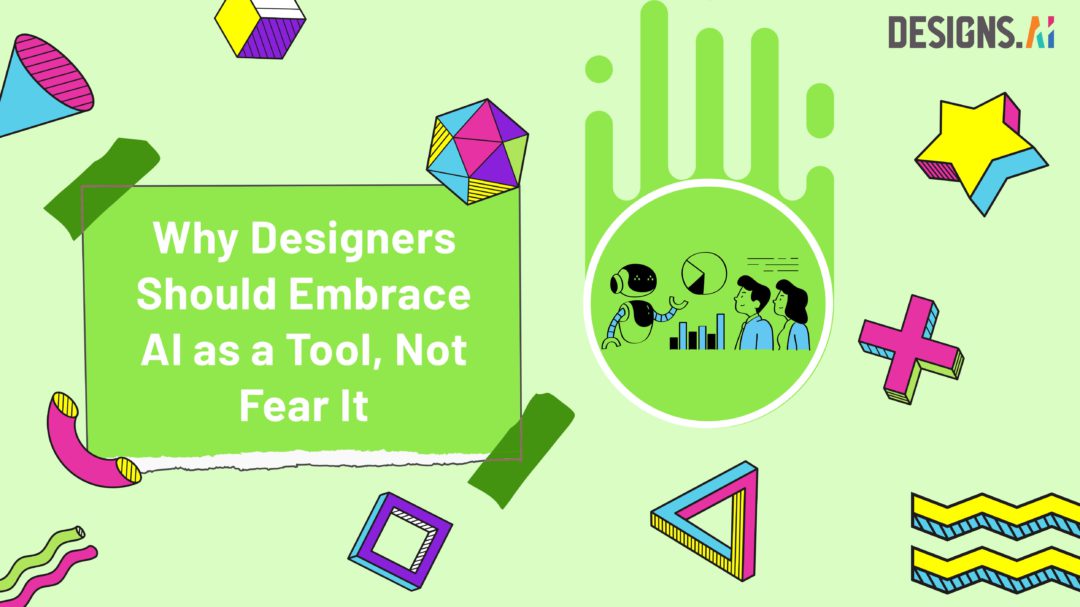
In recent years, the rise of artificial intelligence (AI) has sparked widespread concern about its potential to replace human workers across various industries. The design industry, known for its emphasis on creativity and unique human touch, is no exception. Many designers fear that AI will render their skills obsolete, leaving them jobless in a world dominated by machines. However, these concerns often stem from misconceptions about AI’s role in design. In this blog post, we will look into why designers should embrace AI as a tool, not fear it, and debunk these misconceptions as well as explore how AI serves as a powerful tool that enhances human creativity and productivity, rather than threatening job security.
Debunking the Myth: AI Replacing Human Designers
One of the most prevalent fears surrounding AI is the belief that it will replace human designers entirely. While it is true that AI has made significant advancements in areas such as automated layout generation and image recognition, it is far from being capable of replicating the nuanced creativity and intuition that human designers bring to their work.
AI as a Design Tool, Not a Replacement:
AI should be seen as a complementary tool that augments and empowers designers rather than replacing them. AI-powered design tools, such as generative design software and intelligent algorithms, can assist designers in generating ideas, automating repetitive tasks, and optimizing design processes. These tools act as valuable collaborators, freeing up designers’ time and allowing them to focus on more meaningful and strategic aspects of their work.
Enhancing Creativity with AI:
AI’s ability to process and analyze vast amounts of data provides designers with new sources of inspiration and insights. By leveraging AI algorithms, designers can explore design spaces, generate novel concepts, and gain a deeper understanding of user preferences. This technology acts as a catalyst for creativity. It helps designers break through creative blocks and uncover innovative solutions that might have been overlooked otherwise.
Job Security and Collaborative Potential:
Rather than posing a threat to job security, AI presents opportunities for designers. It expand their skill sets and work in collaboration with intelligent machines. Designers who embrace AI can learn to leverage its capabilities to their advantage. Staying ahead of the curve in a rapidly evolving industry. By developing a symbiotic relationship with AI, designers can unlock new possibilities. They are able to push boundaries, and create designs that seamlessly blend human intuition with AI-powered insights.
The Future of Design with AI:
As we look to the future, it becomes clear that AI will continue to play an increasingly significant role in the design industry. However, its impact will not be in replacing human designers but in transforming their workflow and expanding the creative possibilities. Designers will be able to focus on higher-level thinking, strategic decision-making, and client interactions, while AI handles time-consuming tasks and data analysis.
Conclusion:
The fear that AI will replace human designers is based on misconceptions and a limited understanding of the true potential of AI in the design industry. Rather than being a threat to job security, AI acts as a powerful tool that amplifies human creativity and productivity. Designers who embrace AI as a collaborator and learn to leverage its capabilities will find themselves at the forefront of innovation, creating designs that seamlessly blend the best of human and machine intelligence. By embracing the future of design with AI, designers can position themselves for success in an ever-evolving industry and these are why designers should embrace AI as a tool, not fear it!
Looking to improve your AD design abilities? Our blog offers a comprehensive step-by-step guide using Designs.ai’s Designmaker to help you master it. Check out here!
